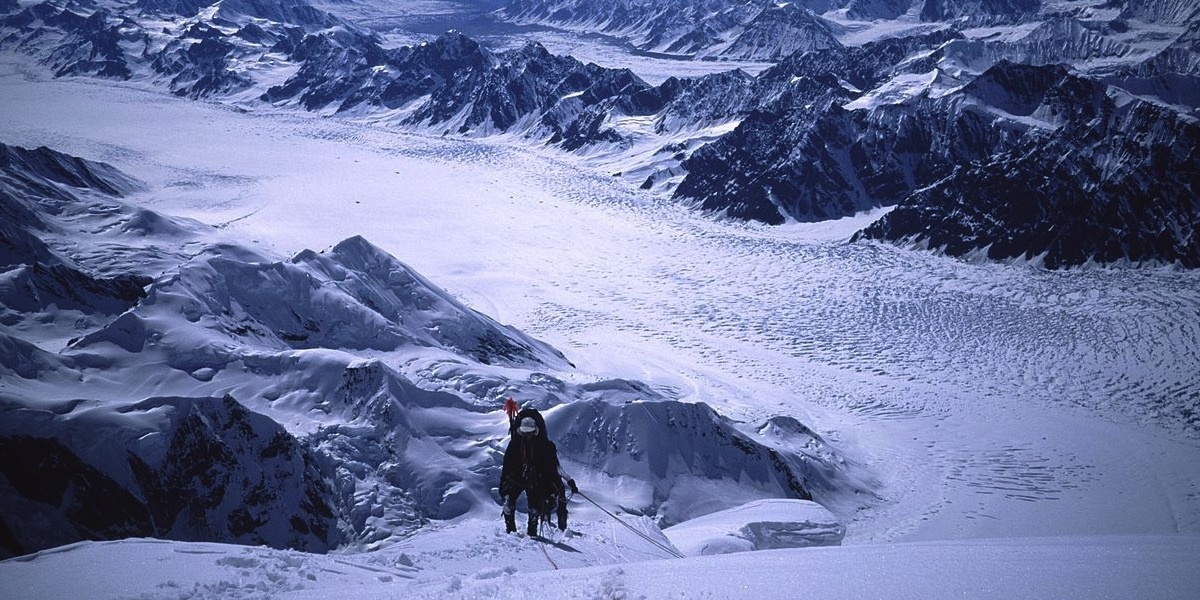
Alaskan Glaciers Have Not Melted This Fast in at Least Four Centuries

Climber on Mt. Hunter, Alaska. Wikimedia Commons
Rising temperatures are causing glaciers in
Alaska’s Denali National Park to melt faster than at any time in the past 400 years, according to new research.
The study was published in the Journal of Geophysical Research: Atmospheres, a journal of the American Geophysical Union in March. The Earth science organization released details about the research Tuesday.
“We have not seen snow melt like this in at least four centuries,” lead author Dominic Winski, a glaciologist at Dartmouth College, told
USA Today.
For the study, Winski and 11 other researchers from Dartmouth College, the University of Maine and the University of New Hampshire examined ice cores drilled from the summit of Mt. Hunter in June 2013.
The ice cores gave the scientists a record of temperatures and climate conditions on the mountain dating back to the mid-17th century. For instance, dark bands of ice with no bubbles indicated that snow on the glacier melted in past summers before re-freezing.
When analyzing the bands, the scientists determined that the site’s summers are at least 2.2-3.6 degrees Fahrenheit warmer now than summers during the 18th, 19th and early 20th centuries. Additionally, rising temperatures are melting 60 times more snow on Mt. Hunter than at the start of Industrial Revolution 150 years ago.
The researchers concluded that the tropical Pacific Ocean, which is warming due to increased
greenhouse gas emissions, is contributing to the unprecedented melting of Mt. Hunter’s glaciers.
Winski explained that warmer tropics lead to higher atmospheric pressures and more sunny days over the Alaska Range, which contributes to more glacial melting in the summer.
“This adds to the growing body of research showing that changes in the tropical Pacific can manifest in changes across the globe,” Luke Trusel, a glaciologist at Rowan University in Glassboro, New Jersey who was not involved with the study, said in a statement. “It’s adding to the growing picture that what we’re seeing today is unusual.”
It is important to understand how mountain glaciers are affected by climate change because they provide fresh water to many communities and their melting can contribute to sea level rise, Winski noted.
“The natural climate system has changed since the onset of the anthropogenic era,” he said. “In the North Pacific, this means temperature and precipitation patterns are different today than they were during the preindustrial period.”

 233k
233k  41k
41k  Subscribe
Subscribe 